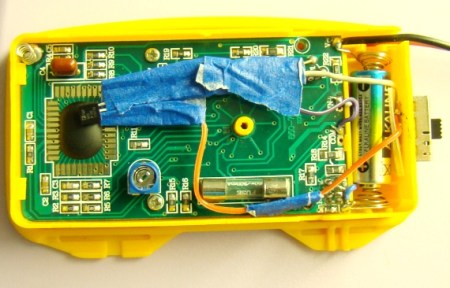
If you’re learning how to play a musical instrument, shoot hoops, or even learning exactly how hard making a golf ball fly really is, here’s one for you. It’s a projected visualization for hand movement guidance.
[Rajinder], [Hrvoje], and [Andrew] at UIUC and Microsoft Research figured out a great way to improve the fine motor skills required of sports and musical instruments. Basically, they took a Kinect and tracked a user’s hand in 3D space. Small visual cues like an arrow and colored pixels are projected onto the hand to provide visual feedback. The guys wrote a great paper on their work, and from the results test subjects’ hand movements greatly improved after a bit of training.
While the uses for this hack is obvious for playing a cello or weight training, there’s no mention of using this project for physical therapy. We could certainly see the benefits of this project being used for rehabilitation.










Recent Comments